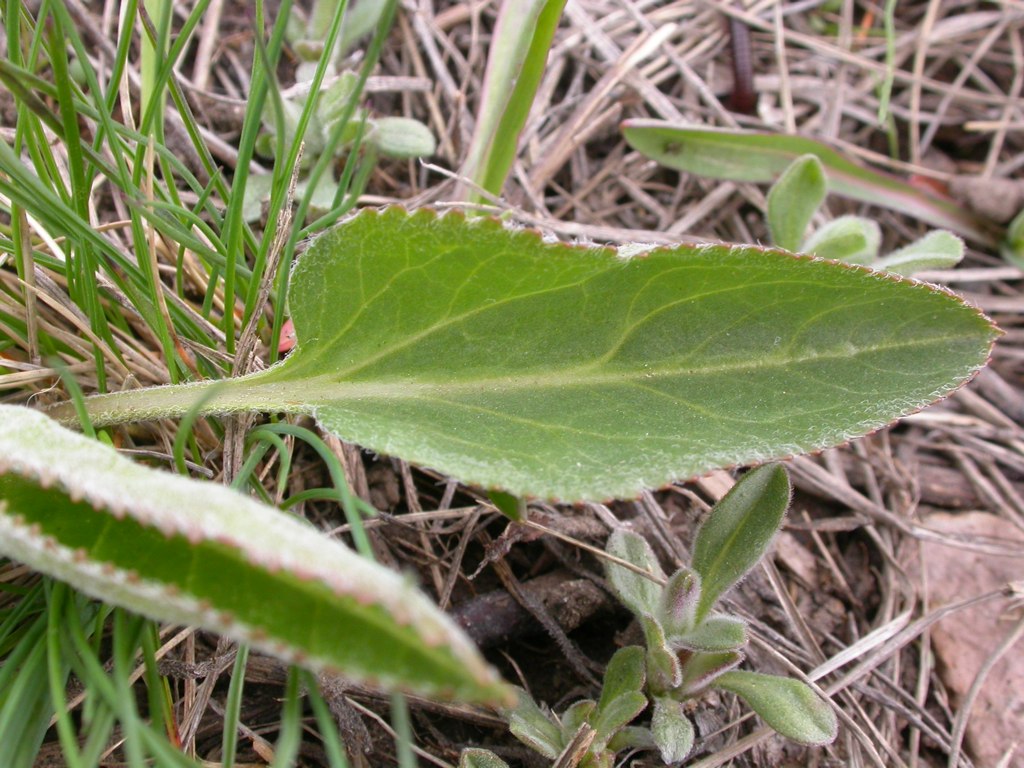Exploring Wyoming besseya, Besseya wyomingensis
Scientifically recognized as Besseya wyomingensis and classified under Plantaginaceae, formerly included in Scrophulariaceae, stands out as a distinctive Herbaceous perennial known for its unique characteristics. While it may also be found under other Synonyms, Besseya gracilis.withN/A form. You can use our free plant care app PlantPlants to identify Wyoming besseya, Besseya wyomingensis.
Temperature
-30 C (-22 F) to 35 C (95 F)
Watering
Low; drought-tolerant
Fertilizing
Low-nitrogen, balanced fertilizer
Sunlight
Full sun to partial shade
Toxicity
Non-toxic; no known toxicity



Appearance and Growth Of Wyoming besseya, Besseya wyomingensis
At maturity, this species reaches approximately 10-30 cm (4-12 inches) tall, presenting Narrow, linear, basal leaves; gray-green color along with Small, tubular flowers ranging from white to lavender, blooming in clusters, followed by Capsule containing small seeds. These features are supported by a reliable Fibrous root system, ensuring stability and sustained growth.
Wyoming besseya, Besseya wyomingensis Origin and Habitat
Native to Endemic to Wyoming, USA, Wyoming besseya, Besseya wyomingensis thrives in Rocky slopes, and alpine meadows at elevations around Typically found between 2,500 to 3,000 meters (8,200 to 9,800 ft). Best suited for USDA Hardiness Zone 3-7. Whether grown indoor, in a curated garden or a more natural setting, its ecological requirements help maintain its vigor over time.



How to take Care of Wyoming besseya, Besseya wyomingensis
Light, Soil and Watering Wyoming besseya, Besseya wyomingensis.
You can use our free plant identify app PlantPlants to chose the best spot for Wyoming besseya, Besseya wyomingensis, This plant prefers Full sun to partial shade and flourishes in Well-drained rocky or sandy soils with a soil pH of about 6.0-8.0.
Wyoming besseya, Besseya wyomingensis needs watering,Low; drought-tolerant, guided by PlantPlants app, You can get plants daily watering schedule. to maintain Dry, ensure steady hydration. Applying water through Soaker hose or drip irrigation; minimal watering supports even distribution and helps prevent overwatering or dryness.
Temperature and Humidity
Wyoming besseya, Besseya wyomingensis performs best within -20 C to 30 C (-4 F to 86 F). Its ideal growth occurs at around 15-20 C (59-68 F), though it tolerates ranges from -30 C (-22 F) to 35 C (95 F). Additionally, maintaining Low encourages healthy foliage and overall plant vigor.
Fertilization & Soil Health
Feeding with Low-nitrogen, balanced fertilizer at the recommended Seasonal Application Frequency on PlantPlants App keeps nutrients balanced. Incorporating Compost or well-rotted manure (minimal) enhances soil structure and fertility, while staying alert to Yellowing leaves, stunted growth helps you adjust care as needed to maintain optimal plant health.
Routine and Maintenance
Regular attention ensures this plant’s beauty and longevity. Early spring for Light trimming of spent blooms and dead leaves tidies its appearance, while Every 2-3 years, if container-grown may be necessary as it grows, requiring a Increase by 2-5 cm diameter increase and a fresh Well-draining soil with added sand or gravel. for Staking or Support. None typically needed.
Seasonal Changes and Propagation of Wyoming besseya, Besseya wyomingensis
During Late fall to early spring, growth may slow and some Leaves may die back in winter; minimal color change can occur. For those looking to propagate, consider Seed propagation, division and provide Scarification may improve germination; requires cold stratification when starting from seed. If using cuttings, follow Take basal stem cuttings in spring; keep in moist, sandy medium until roots form to ensure successful rooting and healthy new plants.
Pests, Diseases and Prevention
our free plant identify and care app PlantPlants can help you diagnosisWyoming besseya, Besseya wyomingensis problems.Though generally robust, keep watch for Aphids, root weevils and remain vigilant against Root rot (in overly wet conditions). Implementing Good drainage; avoid overcrowding plants and applying Neem oil or insecticidal soap for pests; improve drainage for rot when issues arise will help sustain the plant thriving.
Companions and Uses of Wyoming besseya, Besseya wyomingensis
This plant pairs nicely with Other alpine perennials and shows None reported, making it a flexible choice for various Rock gardens, alpine gardens, xeriscaping.
Edible and Cultural Aspects
the Edible Parts: Not commonly eaten. Toxicty of Wyoming besseya, Besseya wyomingensis, Non-toxic; no known toxicity. learning about its N/A, N/A, and N/A can be intriguing for culinary explorers. Some traditions highlight its None documented or note its State flower of Wyoming, representing the state s natural heritage..
Conservation and Status
With an Not currently evaluated, proper Habitat preservation efforts
Frequently Asked Questions
1. What is Wyoming besseya?
It is a herbaceous perennial plant native to Wyoming known for its tubular flowers.
2. Where can I grow Wyoming besseya?
In well-drained rocky or sandy soils in full sun to partial shade.
3. Is Wyoming besseya drought-resistant?
Yes, it is drought-tolerant once established.
4. How often should I water Wyoming besseya?
Typically every 14 days in summer and 30 days in winter.
5. Does Wyoming besseya need fertilizer?
Yes, a balanced, low-nitrogen fertilizer can be applied in spring and summer.
6. When do Wyoming besseya flowers bloom?
They bloom in early summer.
7. Can I grow Wyoming besseya in pots?
Yes, but ensure good drainage and repot every 2-3 years.
8. Are there any pests that affect Wyoming besseya?
Yes, common pests like aphids and root weevils can be a problem.
9. What are the ideal growing conditions for Wyoming besseya?
It prefers dry, well-drained soils, full sun, and can tolerate a range of temperatures.
10. Is Wyoming besseya considered endangered?
It is not currently evaluated by the IUCN, but it is important to preserve its natural habitat.



